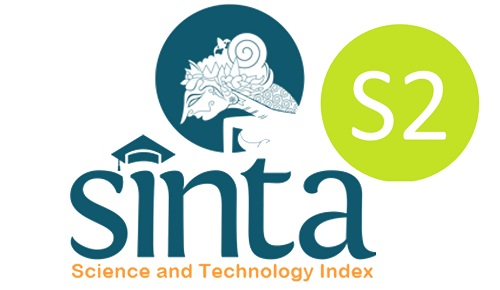ACEHNESE ONOMATOPOEIAS: INVESTIGATING, LISTING, AND INTERPRETING THEIR MEANINGS
DOI:
https://doi.org/10.22373/ej.v7i1.5184Keywords:
Onomatopoeia, Acehnese Onomatopoeia, Phonomime, Phenomime, PsychomimeAbstract
Sound-imitating words, called onomatopoeia, presents in most of languages in the world including Acehnese language, one of traditional languages in Indonesia, in which a great deal of onomatopoeias exist in it due to its unique constructions of onomatopoeia. This research aims at finding out kinds of Acehnese onomatopoeias understood and spoken among native Acehnese people by using Pidie dialect. Thus, five people in the Pidie Jaya regency were sorted out to be the subject informants by actualizing purposive and snowball technique. Moreover, a descriptive qualitative method was manifested in the research by actualizing some instruments to get the data such as structured interviewing and documentation. Hence, all of the data were interpreted in words by listing, transcribing their phonetics orderly, as well as describing both their function and meaning. A three-step analysis – data reduction, data verification, and data display-- was employed to describe the data gathered. Result of the research reveals that Acehnese Onomatopoeias covers a wide range of expressions in sound-imitating words which are categorized into three big classes; Phonomimes which includes auditory impressions of various imitative sounds of nature; Phenomimes -- mimetic words to describe objects’ condition and human’s activities; and Psychomimes – symbolizing psychological state or inner feelings. Still, most of Acehnese onomatopeic words are in forms of repetition and nasalization which seems to be more unique compared to other languages.
Downloads
References
Aliyeh, K., & Rahmani, A. (2014). A Comparison between Onomatopoeia and Sound Symbolism in Persian and English and Their Application in the Discourse of Advertisements. International Journal of Basic Sciences & Applied Research, 3 (SP), 219-225.
Assaneo, M.F., Nichols, J.I., & Trevisan, M.A. (2011). The Anatomy of Onomatopoeia. Journal PLoS ONE, 6 (12), 1-11.
Asyik, A. G. (1972). Atjehnese Morphology. Unpublished master thesis. Institut Keguruan dan Ilmu Pendidikan, Malang.
Azwardi. (2018). Ilmu Bahasa Aceh. Banda Aceh: Bina Karya Akademika.
Bowern, C. (2007). Linguistic Fieldwork: A Practical Guide. London: Palgrave Macmillan.
Durie, M. (1985). A Grammar of Acehnese, on the Basis of a Dilect of North Aceh. Dordrecht: Foris Publications.
Fromkin, V., Rodman, R., & Hyams, N. (2003). An Introduction to Language. Massachusetts: Thomson Heinle.
Hasada, R. (1994). The Semantic Aspects of Onomatopoeia: Focusing on Japanese Psychomimes. Thesis. Canberra: The Australian National University.
Kovecses, Z. (2010). Metaphor, Language, and Culture. DELTA, 26 (SP), 739-757.
Miles, M.B., Huberman, A.M., & Saldana J. (2013). Qualitative Data Analysis: A Method Sourcebook (3rd Ed.). London: SAGE Publication.
Regot, N.R.R. (2015). Translating Sounds: The Translation of Onomatopoeia between English and Spanish. Thesis. Barcelona: Universitat de Barcelona.
Sugahara, T. (2010). Onomatopoeia in Spoken and Written English: Corpus and Usage Based Analysis. Hokkaido: Hokkaido University.
Sugioyono. (2013). Memahami Penelitian Kualitatif. Bandung: CV Alfabeta.
Sulaiman, B., Yusuf, H., Hanoum, S., & Lani, R.C. (1983). Struktur Bahasa Aceh: Morfologi dan Sintaksis. Jakarta: Pusat Pembinaan dan Pengembangan Bahasa Depdikbud.
Tamori, I., & Schourup, L. (1999). Onomatope: Keitai to Imi (Onomatopoeia: Morphology and Semantics). Tokyo: Kurosio Publishers.
Tomal, D. R. (2010). Action Research for Educators (2nd Ed). Plymouth: Rowman & Littlefield Education.
Wardhaugh, R. (1986). An Introduction to Linguistics. Oxford: Page Bros, Ltd.
Yamamoto, H. (1993). Sugu Ni Tsukaeru Jissen Nihongo Shirizu 1— Oto To Imeji De Tanoshiku Oboeru: Giseigo-Gitaigo (Sho-Chukyu) [Practical Japanese Workbook 1— Onomatopoeia: Elementary-Intermediate]. Tokyo: Senmon Kyoiku Shuppan.
Yule, G. (1996). Pragmatics. New York: Oxford University Press.
Zolfagharian, M., & Ameri, A. (2015). A Sound Symbolic Study of Translation of Onomatopoeia in Children’s Literature: The Case of “Tintin”. Journal of Language and Translation (JLT), 5 (2), 111-117.
Downloads
Published
Issue
Section
License
Proposed Policy for Journals That Offer Open Access
Authors who publish with Englisia journal agree to the following terms:
- Authors retain copyright and grant the journal right of first publication with the work simultaneously licensed under a Creative Commons Attribution License that allows others to share the work with an acknowledgement of the work's authorship and initial publication in this journal.
- Authors are able to enter into separate, additional contractual arrangements for the non-exclusive distribution of the journal's published version of the work (e.g., post it to an institutional repository or publish it in a book), with an acknowledgement of its initial publication in this journal.
- Authors are permitted and encouraged to post their work online (e.g., in institutional repositories or on their website) prior to and during the submission process, as it can lead to productive exchanges, as well as earlier and greater citation of published work (See The Effect of Open Access).









